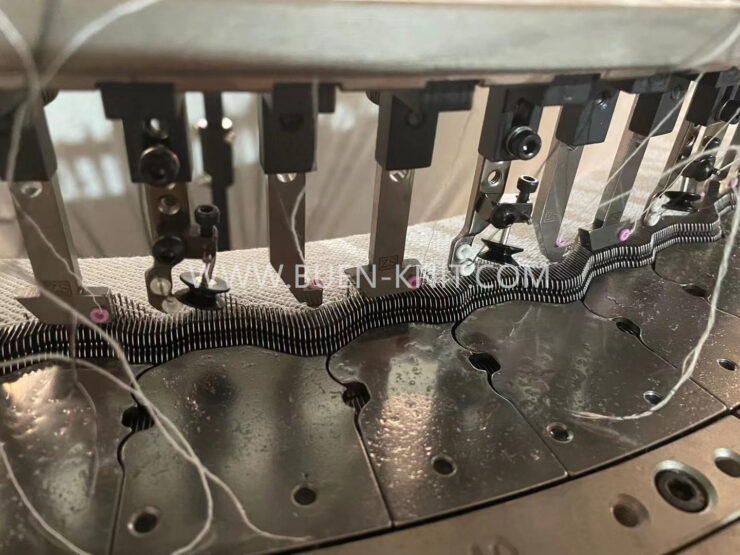Weft knitted jacquard designs are built up from face loops in selected colours on a base fabric of either single jersey, 1*1 rib, or links-links(purl). The face loop needles are individually selected, ususally each only once per pattern row, to rise and take one yarn from a sequence of different coloured yarn feeds on a knit or miss basis.
In two-colour jacquard, certain needles will be selected to knit colour A from the first feed and , at the next feed, there will be a negative selection with the remaining needles being selected to knit colour B. The face loops of two feed courses thus combine to produce one complete row of face pattern loops.
In three colour jacquard, each needle will be selected to knit once and miss twice at a sequence of feeds, so that threee feeder courses will produce one design row. The greater the number of colours in a design row, the lower the rate of productivity in design rows per machine revolution or traverse, assuming stripping is not employed.
If striping is employed with jacquard selection, different colours can be selected at different design rows so that there are more colours in the total design than in one design row. For example, a four-feed machine with foru-colour stripping at each feed could knit 4 colours per design row but have a total of 16 colours in the design depth.









